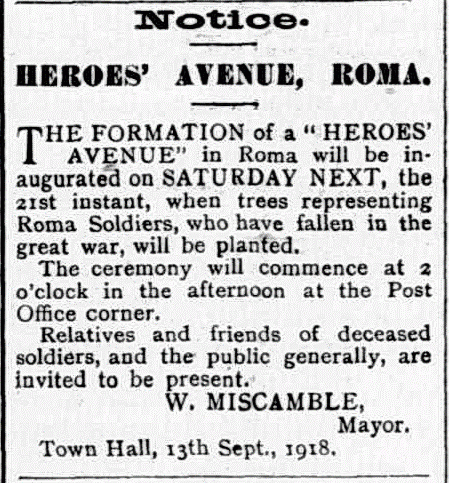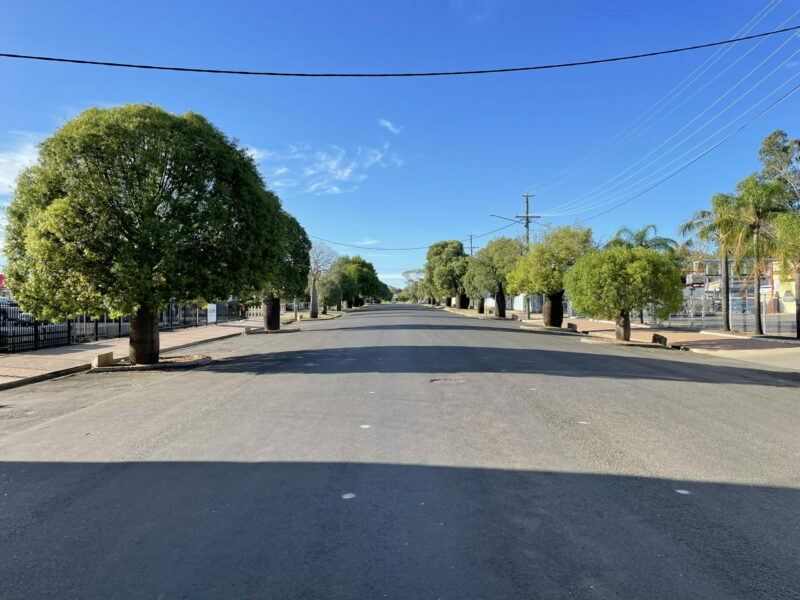How many of you have visited a cemetery lately? Wandered among the graves of people long past and long forgotten? The tombstones crumbling and the weeds sprouting up in a place that looks neglected, unloved and of no matter?
After watching the presidential debate in America, I have to feel that we are witnessing the fight between the War Graves and the Civilian Graves throughout the world: except, we have one candidate who wants to keep everything from yesterday well tended and cared for, and another who is happy to see us all sink into neglect, decay and misery.
In my opinion, President Trump is all for taking care of things. President Biden is all for letting the grave robbers in. For myself, I am no fan of grave robbers who seek to hijack our past in order to import people who have no love for our nations so that our "leaders " can get votes. It somehow seems ghoulish to me.
But, given that I wrote this article prior to watching the debate, I believe that my message remains sound.
We need to protect our past in order to protect our present and future.
Without a genuine love of and for our forbears, how can we possibly love and live our lives today?
No, we must return to honouring everything we have earned and teaching our young to learn from the past in order to have a bright future.
Thank goodness, our War Graves and our Veterans are treated with more respect. So today, I want to talk to you about War Graves. Last night, I watched a documentary about the Kokoda Campaign in WW II and was struck by the honour with which the cemetery and final resting places for so many of our brave were maintained. Places of tranquility and beauty, a fitting tribute to those who gave so much for our freedom in those dark days.
So I set out to learn what I could about the great gift of the Australian War Graves Commission and that of the American Battle Monuments Commission (ABMC) and British Imperial War Graves Commission (IWGC).
Today's article focuses on the Australian War Graves Commission.
The Australian War Graves Commission, known today as the Office of Australian War Graves (OAWG), was established in the aftermath of World War I to honour and commemorate Australian soldiers who died in service. The Commission was part of a broader effort led by the British Imperial War Graves Commission (IWGC), founded in 1917, which aimed to ensure that all Commonwealth military personnel who died in the two World Wars were properly commemorated.
Australia's commitment to this cause stemmed from a deep national respect for its servicemen and women, reinforced by the significant losses suffered during the Gallipoli Campaign and the Western Front. The Australian government, recognising the importance of providing a dignified and lasting memorial for our fallen soldiers, collaborated with the IWGC to establish and maintain war cemeteries and memorials across Europe, the Middle East, and other regions where Australian forces served.

In its early years, the Australian War Graves Commission focused on identifying, recording, and marking the graves of Australian soldiers. The task was immense, given the scale of the conflicts and the number of personnel involved. The Commission worked tirelessly to ensure that each grave was properly marked with a standardised headstone, bearing the soldier’s name, rank, unit, date of death, and, where possible, a religious symbol and personal inscription.
One of the notable contributions of the Commission was its involvement in the creation of the Villers-Bretonneux Australian National Memorial in France. Unveiled in 1938, this memorial commemorates all Australian soldiers who fought in France and Belgium during World War I, particularly those who have no known grave. The memorial stands as a testament to Australia's role in the war and the sacrifices made by its soldiers.

Following World War II, the responsibilities of the Australian War Graves Commission expanded significantly. The Commission, along with its British and Commonwealth counterparts, embarked on a similar mission to identify, record, and commemorate the graves of servicemen and women from the second global conflict. This period saw the establishment of new war cemeteries and memorials, as well as the maintenance and enhancement of existing sites from World War I.
The OAWG's scope further extended to encompass the commemoration of Australians who died in subsequent conflicts, including the Korean War, the Vietnam War, and peacekeeping operations. The Commission's work ensured that the memory of all Australian service personnel who died in war was preserved with dignity and respect.

Today, the Office of Australian War Graves operates under the auspices of the Department of Veterans' Affairs. Its responsibilities include maintaining over 70 war cemeteries and numerous individual graves and memorials around the world. The OAWG also manages commemorative programs and educational initiatives to promote awareness and understanding of Australia's military history.
The legacy of the Australian War Graves Commission is profound. It stands as a symbol of national pride and gratitude, reflecting Australia's enduring commitment to honouring those who made the ultimate sacrifice. Through meticulous care and respectful commemoration, the OAWG ensures that the stories of Australian soldiers continue to be told and remembered by future generations.
In recent years, the OAWG has embraced new technologies and methodologies to enhance its mission. Digital records, interactive databases, and virtual tours of war cemeteries and memorials have been developed to provide broader access to information and engage a global audience. These innovations help keep the memory of Australia's war dead alive in an ever-changing world.
The Commission's work also includes collaboration with local and international partners to preserve historical sites and promote cultural heritage. Educational outreach programs, commemorative events, and partnerships with schools and community organizations are part of its ongoing efforts to ensure that the legacy of Australian service and sacrifice is honoured.
The annual budget for the Office of Australian War Graves (OAWG) is part of the broader funding allocated to the Department of Veterans' Affairs (DVA). For the 2024-2025 fiscal year, the DVA received additional funding specifically for its obligations to the Commonwealth War Graves Commission, amounting to an additional $1.16 million over three years. This is part of a larger budget that ensures the maintenance and commemorative services of war graves and memorials (Department of Veterans' Affairs). The exact annual budget varies, but these allocations highlight the government's commitment to this important work.
The wages of the gardeners and caretakers who maintain Australian war graves are paid by the Office of Australian War Graves (OAWG). The OAWG operates under the Department of Veterans' Affairs, which funds these wages through its allocated budget. This budget covers the costs associated with the maintenance of war cemeteries and memorials, ensuring that the graves of Australian service personnel are well cared for and preserved.
There are small towns throughout Australia where old War memorials take pride of place. One such town is Roma, in Western Queensland. Anyone who has been there could miss the avenue of Bottle Trees

All these years later they have grown and are a testament to our gratitude.

Roma’s living memorial, their Heroes Avenue, consisting of some 93 Queensland Bottle Trees (Brachychiton rupestris), was planted between 1918 to 1920, to honour the service and sacrifice of WW1 soldiers from the district. Each tree was matched with an accompanying, brass name plate. A tree commemorating Lance Corporal Norman Saunders, who was killed in France in 1916 during World War One, was the first of the 93 bottle trees planted and is at the site of the cairn. (A great series of images of current memorial signs and plaques, is available via the Virtual War Memorial Australia website)
So what can we learn from this? Perhaps, when governments put their mind to it, they can actually spend our money on something good, worthwhile, decent and honourable.
As a child, I attended a small country school that had a memorial grove of trees; one planted for each young soldier who did not return from war. We attend that grove and kept the plaques clean and well maintained.
I am somehow reminded of our public cemeteries today, under the auspices of the state governments whose maintenance seems sadly lacking.
It appears that government red tape might be one of the problems.
The grounds of Melbourne General Cemetery are dotted with the graves of notable figures from Australia's history.
An ornate stone monument serves as a grave for Governor Sir Charles Hotham, who sparked the Eureka Stockade rebellion.
A headstone honours Boon Wurrung elder Derrimut who bridged racial divides between colonists and Indigenous people to prevent a massacre in 1835.
Iron rails surround the gravestone of prominent author and artist Louisa Meredith, while a dark, towering gravestone marks the final resting place of taxidermist John Leadbeater — after whom the possum was named.
But a quick survey of the grounds reveals many of the graves across the 43-hectare site are falling into disrepair, with broken headstones, degraded memorials and graves cracked open by exposure to the elements.
It's a common sight in many cemeteries, which might prompt the question: Why hasn't someone fixed these graves?
When a grave is purchased in Victoria it is in perpetuity, or in other words, forever. While the cemetery land is owned by the Crown, the grave itself is owned by a purchaser who is known legally as the 'holder of the right of interment'.
Maybe we need to ask the Aboriginal Land Councils to take over the cemeteries? ( sarcasm. ) They could get a massive government grant ......
Queensland's legislation regarding burials is less stringent than the laws in states like New South Wales and Victoria, allowing the ARA ( Australian Remembrance Army ) more leeway to rescue dilapidated graves.
"We're fortunate here in Brisbane that the Brisbane City Council are really appreciative of what we do," Ms Walker said.
"They wouldn't allow what we do in some cemeteries down there, it just would be too difficult to undertake, too much red tape."
It costs the ARA about $20 to renovate a headstone, but with a small group of volunteers and no dedicated source of funding it remains a constant struggle against the elements.
So my question is this..... Why?
The land on which Australian war cemeteries are located in other countries is generally provided by the host nation, often as a gift or under long-term lease agreements. This land is then managed and maintained by the Commonwealth War Graves Commission (CWGC) or directly by the Office of Australian War Graves (OAWG) in cooperation with local authorities. The CWGC operates under agreements with host countries, ensuring the perpetual care and maintenance of war cemeteries and memorials dedicated to Commonwealth forces.
Can we not do something similar here with our own cemeteries for civilians?
BLOG COMMENTS POWERED BY DISQUS



















































